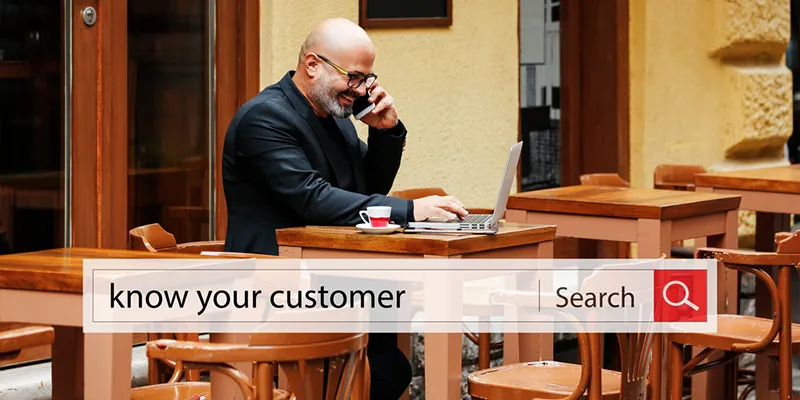Be the customer you want to serve
While customer centricity is essential for a business, knowing who really the customer is, knowing the desire to be addressed, and where to focus will take time to come by.
Mahatma Gandhi, the Father of the Nation, used to say: ‘be the change you want to see’. For entrepreneurial success, much is weighed on how much you know your customer, or should I say, how much are you the customer. Tracing back the genesis of most successful enterprises, they either start with an opportunity to be tapped or with a problem to be solved.

As for the problem, most problems are personal to the founder(s) or are in immediate context, past or present. Yet, translating personal problem and solutions into a profitable proposition is not trivial. However, starting with a problem, and not an idea, remains the cornerstone of entrepreneurial success.
In this article, I argue the importance of being the customer you want to serve, and why this doesn’t happen as regularly as it should. I also propose a few means by which aspiring entrepreneurs, and those amidst an inflexion point in their journey, could refocus on the true north (read customers).
A lot has been said about how the customer is the king and why customer centricity is quintessential to businesses, both large and small.
But at the very start of the business, some of these time-honed dictums remain difficult to appreciate. There are three reasons why customer centricity takes time to come by, let alone being the customer. I can think of three explanations here - knowing who really the customer is, knowing the desire to be addressed, and where to focus. Let’s delve into this in detail.
Knowing the customer
While it may seem simple, knowing the customer isn’t trivial. Take for example the baby food industry. For baby food, there are multiple parties involved, just on the domestic front. The mother, the father, the doctor, the domestic help, grandparents, and of course, the baby. Each constituency has a different role and intent. The father most likely pays, the mother decides on the feeding schedule and quantity, the domestic help mostly feeds, the grandparents also have an opinion, the doctors recommend one brand over another, and the baby has to finally have it happily. So, who’s the customer? Where should a company really focus?
In most markets and most product categories, there are always multiple customers and stakeholders, and you can’t really afford to alienate any one. Take for instance online learning startup Byju’s. For long, the company focused on students and their parents, and to their own peril ignored the teachers, one of the most important stakeholders in the learning process. As a result, in many schools, it was tough convincing the teachers, who now feel threatened by this new teaching mechanism.
Knowing the customer(s) in a holistic manner isn’t often given adequate attention, and as a result, the startup often claims to be everything for everyone. No marks for guessing the result.
Knowing the desire
Even if you know the customer, knowing what is sought after isn’t easy either. It stems straight from the astute observation of Microsoft’s Satya Nadella that innovation is about addressing the unstated and unarticulated needs of the customers. Even if you know the customer or a set of customers, getting to the stated, let alone unstated, takes some efforts and methods. Little doubt, some of the most innovative companies operate at the level of desires and not just needs or wants.
Take for instance Ola, the cab hailing company. Ola may have copied Uber, but with adding layer by layer of features, it’s fast moving ahead of Uber on many accounts. Ola Money, ride sharing, outstation taxis, Ola Play, Ola Credit et al. are examples of what you desired but never needed in a taxi. It was not just about asking the customer, but rather anticipating the next and the adjacent.
The master of this, however, remains Google. The Google Search itself has evolved so much over the years that it’s almost reading our (collective) minds, and that too without much of a formal inquiry. The company is tapping into our desires, living up to Arthur Clarke’s famous quip – “any sufficiently advanced technology is indistinguishable from magic”.
Knowing the focus
With so many customers and so much to be desired, the trick is to be disciplined. Knowing what to really go after and what to leave on the table can make a significant difference. A clear focus is necessary for two primary reasons - firstly, it allows for making a clear impression in the crowded mind of the customer, and secondly, it helps skirt unnecessary competition. Focus, in terms of customer segment and desire to be addressed, helps devote the necessary resources to compete for and attribute the value in turn.

Know the customer, then the desire, and then where to focus on
For instance, for as long as Airbnb remains focused on the value conscious travellers and small property owners, the company would enjoy market share and competitive deterrence. However, the moment the focus gets diffused, there would be unprecedented competition from the otherwise benign players. Further, the customers are also at loss as to why chose Airbnb over other alternatives.
To sum up, knowing the customers, the desires, and then to focus are essential foundations of a successful enterprise. While the customer may change, their desires would shift, and so would your focus, the rigor helps.
(Disclaimer: The views and opinions expressed in this article are those of the author and do not necessarily reflect the views of YourStory.)







